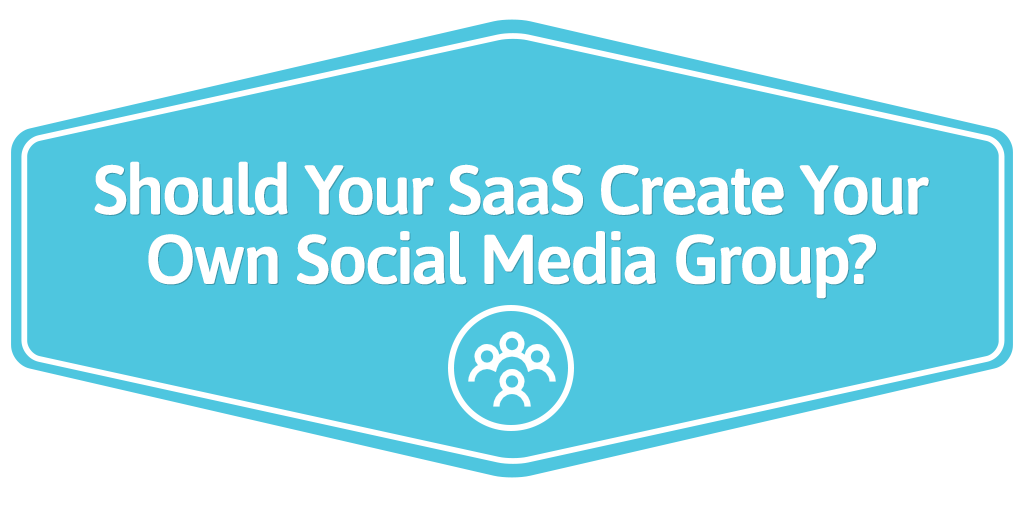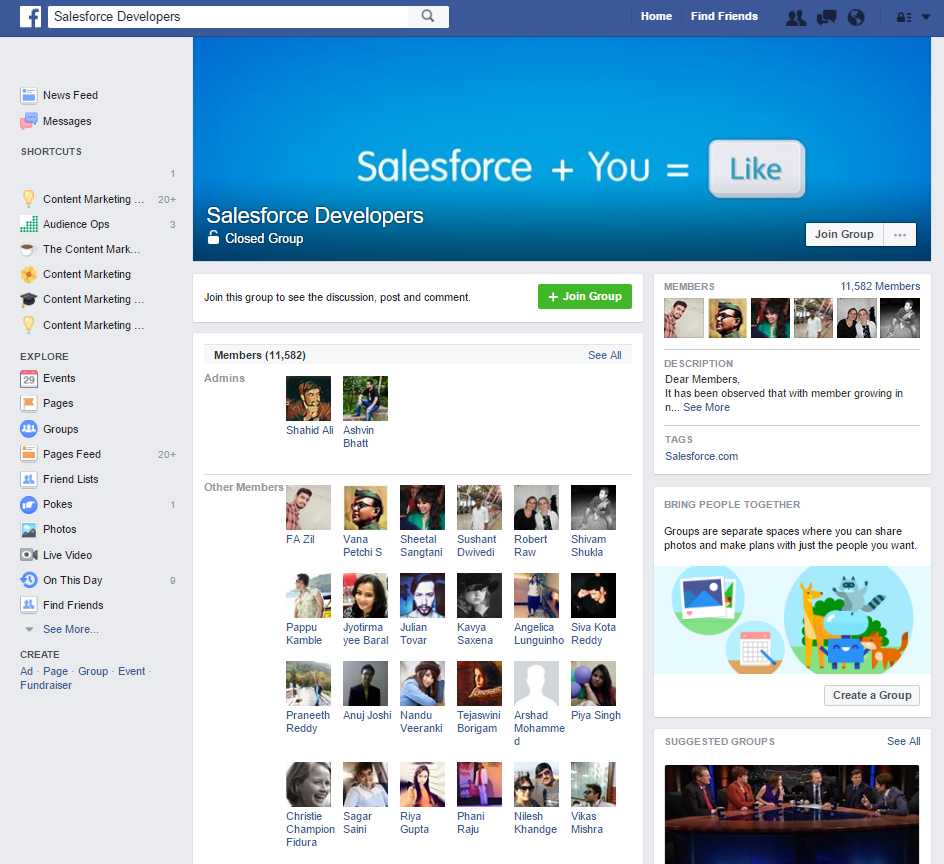
Countless businesses make the mistake of using social media like a megaphone. They shout and shout and shout into cyberspace, hoping someone will click their links and convert into customers.
Social media doesn’t work like that.
Social media is a conversation. You wouldn’t monopolize a conversation without letting the other person speak. That would be rude and pointless. On social media, you need to let your customers and fans speak just as much as you speak to them.
Every business has branded social media pages on the big networks, but many SaaS products are creating community groups to organize conversations around their products.
What is a social media group?

A social media group is a discussion area on one of the popular social networking sites. By creating a group, you are establishing a location to discuss a particular topic. In this case, you want everyone to talk about your SaaS product.
You can adjust the settings on a social media group a number of ways.
- You can leave it open to the public so anyone can join.
- You can allow people to request invites that require approval.
- You can set them to invite-only so only you can invite people.
Groups can be created for all topics under your SaaS name, or given a more specific purpose. For instance, Salesforce Developers is a group that discusses development topics, but not customer help, onboarding, usage, or anything else.
Where should you start a social media group?
Groups are most popular on Facebook, LinkedIn and Google+. Twitter is popular, but it doesn’t have a private group feature. Other networks have group features, but they don’t have enough users to be worth your time.
With nearly 2 billion monthly users, Facebook is the undisputed largest social network. If any brand had to pick one social network to invest their time, it should be Facebook. According to the Pew Research Center, it’s not even close.

Facebook uses an algorithm to determine how posts are displayed in your news feed. It downplays branded pages (to encourage brands to buy ads), but groups don’t carry the same penalty.
Engagement is made easier because members are automatically notified of new conversations. Nor do you have to do much promoting because groups are automatically suggested to friends of members.
Groups can be customized with branded artwork, custom descriptions (with links), and a pinned post at the top of the group’s timeline that displays community rules, helpful resources, or a welcome message.
Google+ groups are called communities. Unlike Facebook, they can be created and run by branded pages, not just personal profiles. Unless hidden, community posts automatically show up in members’ streams. Members receive notifications when new posts are added.
Communities can be customized with descriptions and multiple links to your website. You can also create categories of posts to help organize information for your members.
If you’re a B2B SaaS, you want to be on LinkedIn. It’s the largest professional network, making groups excellent places to find job candidates.
LinkedIn is unique because it allows you to customize messages sent to people who request invites and emails sent to people who are approved to join. It also lets you send an email directly to the inboxes of your members once a week.
What are the challenges of starting a social media group?
You thought all that sounded great, didn’t you? Like anything else, there are drawbacks.
1. Groups cost your time
Even though groups are free to create, they still cost time to set up, grow, and moderate. Someone will have to incite discussion every day until the community is large enough to operate on its own.
Once the community is flourishing, you’ll still need to be involved. People will expect you to start conversations, reply to questions, provide information, and interact with users.
If users get a whiff that you aren’t paying attention to your own group, membership will quickly decline. Why would anyone join a product’s group if no one from the product is willing to participate?
2. Don’t forget to moderate
Moderation is never-ending. You can’t ignore the group for a week, even if you vow to give it extra attention next week. Someone needs to constantly monitor the group for unpleasant conversation, inappropriate material, and upset customers.
Remember: The goal of a social media group is conversation. They expect someone to reply.
3. Keeping members is tough
The hardest challenge is keeping members coming back. There are a lot of communities out there for social media users to join. They can’t devote time to all of them.
A large portion (in some cases a majority) of your members are solution-seeking. They have a particular question they need answers to, so they come to the group. Once they have their solution, you’ll never see them again.
This isn’t a bad thing, however. Solving customers’ problems is fantastic marketing. But ask-and-leave users don’t support the growth of the group. You’ll likely churn almost as many people as you retain.
The solution is to pack as much value into your group as possible. Once they join, you want each member to say “Wow, I’m glad this is here.” Admittedly, that isn’t easy and it takes time.
So why start a social media group?
Communication is powerful. It solves problems, eases fears, and makes people feel valued. For SaaS businesses, communication with your customers encourages renewals and upgrades.
A social media group gives you another avenue of conversation with your customers and fans. Even if you offer online support, in-app chat, a well-crafted knowledge base and your own forum, it’s still smart to position yourself wherever you customers hang out.
Look at it like this: We spend a dazzling amount of time on social media, including 50 minutes per day on Facebook alone. Rather than pulling your customers away from their preferred experience, it’s simpler and easier for everyone to go to them.
Furthermore, social groups are a useful way to answer technical questions or give product help. When a customer is on the verge or churning, they don’t give you a big window to correct your mistake and help them find value in the product. You need to be there immediately to solve their problem. When you do solve their problem, you build loyalty.
Finally, social media groups give you an opportunity to make your product better by better understanding your customer. Group contributors are likely people who are invested in your product. They’re using it regularly, working it into their daily process.
These power users are excellent sources of feedback. They’ll recommend features, give you insights into how other customers are using your product, and point out the bugs.
If you have a dedicated social media community manager already, giving them the task of managing a group shouldn’t be a problem. You’ll need daily content (at the minimum) and the ability to respond to notifications in a timely manner.

